Consistency in blogging can be your secret weapon for success. One way to achieve it is by using a content calendar. It helps you plan, organize, and schedule your blog posts and social media content effortlessly.
In this step-by-step guide, you’ll learn how to create a blog content calendar that aligns with your goals. We’ll cover everything from brainstorming blog post ideas to scheduling social media updates.
Imagine having all your content creation tasks laid out in a calendar template. This approach saves time and ensures you’re never scrambling for blog post topics.
Ready to dive in? Grab your favorite planning tools and let’s get started on creating a content calendar that keeps your blog and social media on point.
Key Takeaways
Content calendar helps you plan, organize, and schedule blog posts and social media content.
Define your goals, choose channels, set frequency, and plan topics for creating a blog content calendar.
Use monthly planners, online content planners, or content calendar templates to save time.
Include seasonal blog posts, evergreen content, and announcements to keep your blog diverse.
Maintaining your blog content calendar is a long-term commitment for consistent blogging.
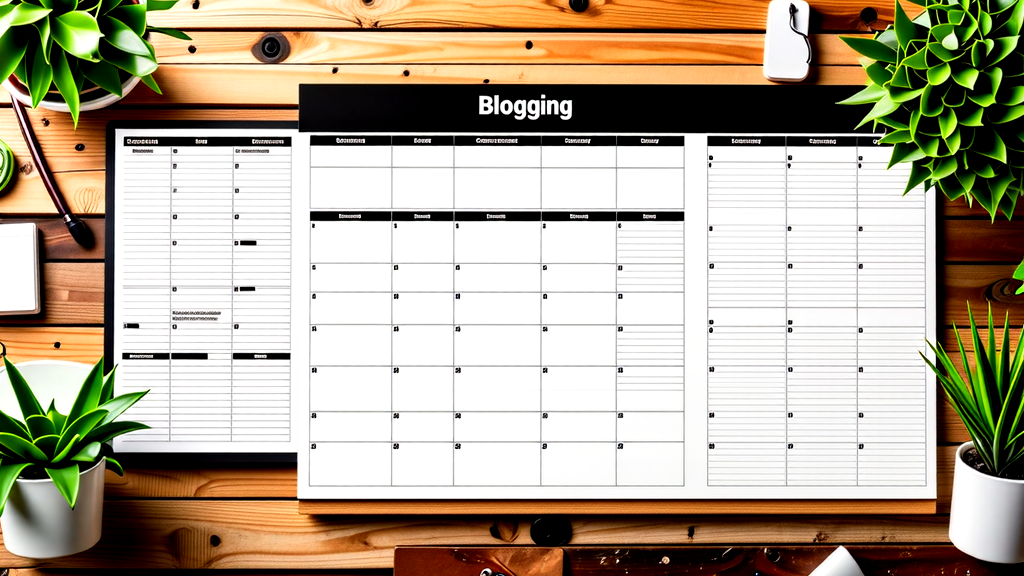
Why You Need a Content Calendar for Your Blog
Knowing how to create a content calendar transforms your blog into a well-oiled machine. It allows you to visualize your blog post ideas, ensuring a steady stream of content. A calendar helps you align your blog with your social media efforts, creating a cohesive strategy across platforms. Seasonal blog posts and trending topics can be planned in advance, keeping your content timely and relevant. Plus, it saves you time by organizing your writing social media schedule efficiently.
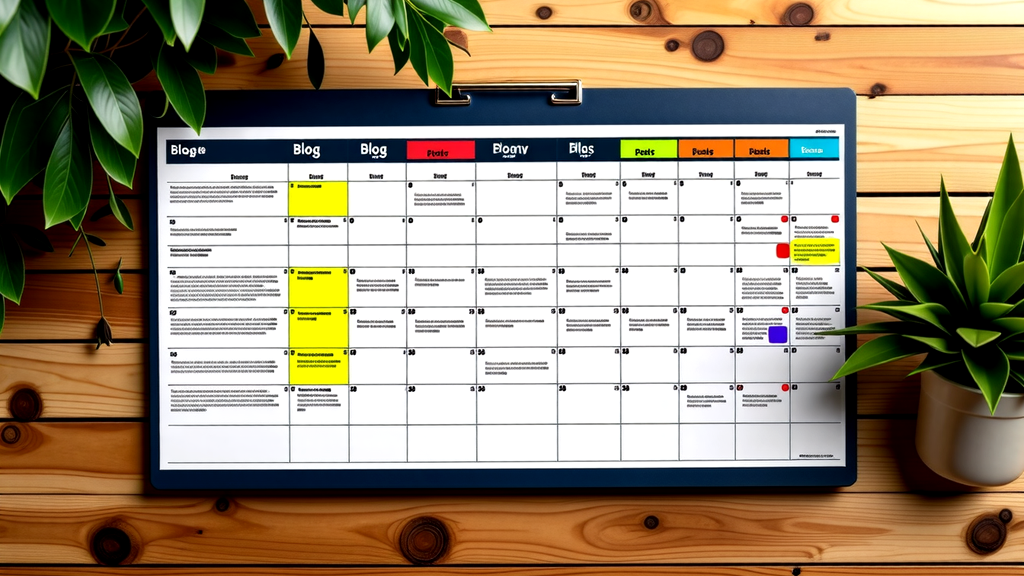
Understanding Different Types of Blog Content
Examining various types of blog content reveals their unique roles in your overall strategy. How to create a content calendar effectively involves diversifying blog posts. Consider how-to guides for practical tips, listicles for quick reads, and case studies for in-depth analysis. Incorporate seasonal blog posts to align with current trends. Balancing these types keeps your audience engaged and returning for more.
|
Blog Content Type |
Example Topics |
Frequency |
Added to Calendar |
|---|---|---|---|
|
How-to Guides |
DIY Projects |
Bi-weekly |
Yes |
|
Listicles |
Top 10 Tools |
Weekly |
Yes |
|
Case Studies |
Success Stories |
Monthly |
Yes |
|
Seasonal Blog Posts |
Holiday Ideas |
Quarterly |
Yes |
|
Evergreen Content |
Best Practices |
Bi-monthly |
Yes |
Seasonal Blog Posts: Capitalizing on Timeliness
Utilizing the timeliness of seasonal blog posts can significantly boost engagement. To achieve this, creating a content calendar is essential. Planning ahead allows you to align your blog post ideas with relevant holidays and events, ensuring your content resonates with your audience.
A well-structured blog content calendar offers a clear roadmap, helping you manage your social media content and media calendar more effectively. For inspiration, check out seasonal content strategies on Instagram to enhance your blog calendar posts.
Evergreen Content: The Backbone of Your Blog
The backbone of your blog is evergreen content. It consistently attracts traffic, regardless of trends. Knowing how to create a content calendar helps keep your topics relevant and well-timed. Use a content calendar template to schedule posts and align with seasonal events. This not only organizes your social media content but also ensures your blog post ideas remain fresh. For more insights, the team at Semrush offers excellent resources on content strategy.
Cornerstone Content: Building Authority Over Time
Cornerstone content serves as the foundation of your blog, establishing authority over time. When knowing how to create a content calendar, focus on consistency and relevance. A strategic blog content calendar aligns your social media content with seasonal blog posts, keeping your audience engaged year-round. Utilize a content calendar template to streamline your blog post ideas and ensure timely updates. This approach guarantees that your social media calendar and media calendar work harmoniously, maintaining a steady flow of fresh, engaging content.
Announcement/News Blog Posts: Keeping Readers Informed
Keeping readers informed through announcement and news blog posts requires strategic planning. Utilize a content calendar to schedule your blog post ideas and align them with timely events. This ensures your blog content remains relevant and engaging. Tools like a content calendar template streamline the process, making it easier to manage your social media calendar. Consistency is key; regularly updating your media calendar keeps your audience engaged. Planning ahead not only saves time but also enhances your blog’s efficiency.
The Step-by-Step Process of Creating a Content Calendar
Creating content calendars involves several steps. Begin by brainstorming blog post ideas relevant to your audience. Next, categorize your content into themes, incorporating both blog and social media topics. Use a content calendar template to organize posts by date. Allocate specific times for content creation and writing social media updates to maintain consistency. For more strategic advice, I recommend checking out my post on content marketing for listbuilding success.
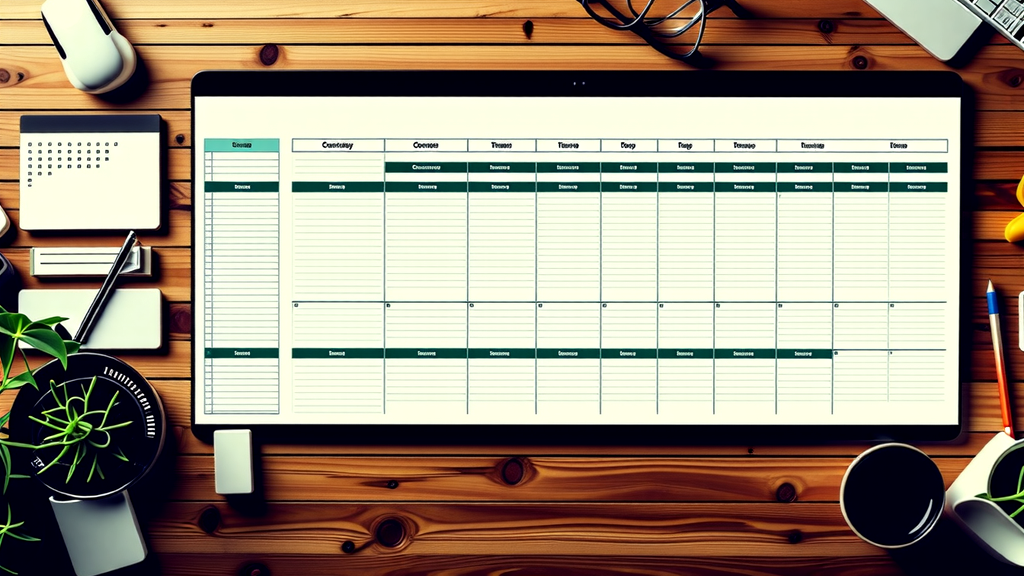
Define Your Goals: What You Want to Achieve
Outlining your objectives involves recognizing what you aim to achieve. Are you focusing on increasing reader engagement or boosting traffic? Establishing these goals is crucial when learning how to create a content calendar. Prioritize tasks and allocate the necessary resources accordingly. For instance, if efficient time management is a goal, take a look at my tips in 7 Surefire Ways to Get More Out of Your Day. This approach ensures your blog post ideas are consistently executed without compromising quality.
Choose Your Channels: Where to Distribute Your Content
Deciding where to distribute your content is crucial. First, evaluate your social media platforms. Is your audience on Instagram or LinkedIn? Tailor your blog and media content calendar accordingly. When planning blog content, diversify your blog post ideas to fit the platform. For example, use visual content on Instagram while opting for thought leadership pieces on LinkedIn. For consistent updates, consider using our Ultimate Email Content Planning and Scheduling Template to streamline your process.
Set Your Frequency: How Often to Post
Determining the ideal frequency for your posts depends on several factors. For blogs, aim to publish at least once a week to maintain reader engagement. On social media, daily updates can keep your audience active and interested. Balancing these schedules within your blog content calendar is essential. This ensures your social media content aligns seamlessly with blog post ideas. Allocate specific times for writing social media updates and blog posts to maintain consistency without overwhelming yourself.
Plan Your Topics: What to Write About
When planning your topics, consider your audience’s interests and industry trends. Mix in evergreen and timely subjects to keep your blog engaging. Use tools like Google Sheets for a streamlined blog content calendar. Think about how you can repurpose social media content from blog posts to save time. For instance, a single blog post can provide multiple updates. This approach maximizes your efforts and keeps your media calendar dynamic and relevant.
Tools and Resources for Content Calendar Creation
Understanding tools and resources available for content calendar creation is crucial. Platforms like Trello and Asana offer robust project management features, while Google Sheets allows for customizability. Leveraging analytics tools, such as Google Analytics, helps in fine-tuning blog content. For social media, tools like Buffer or Hootsuite streamline scheduling. To consistently achieve success, I often refer to my guide on 5 Keys to Consistently Achieve Success. These resources enhance content creation efficiency.
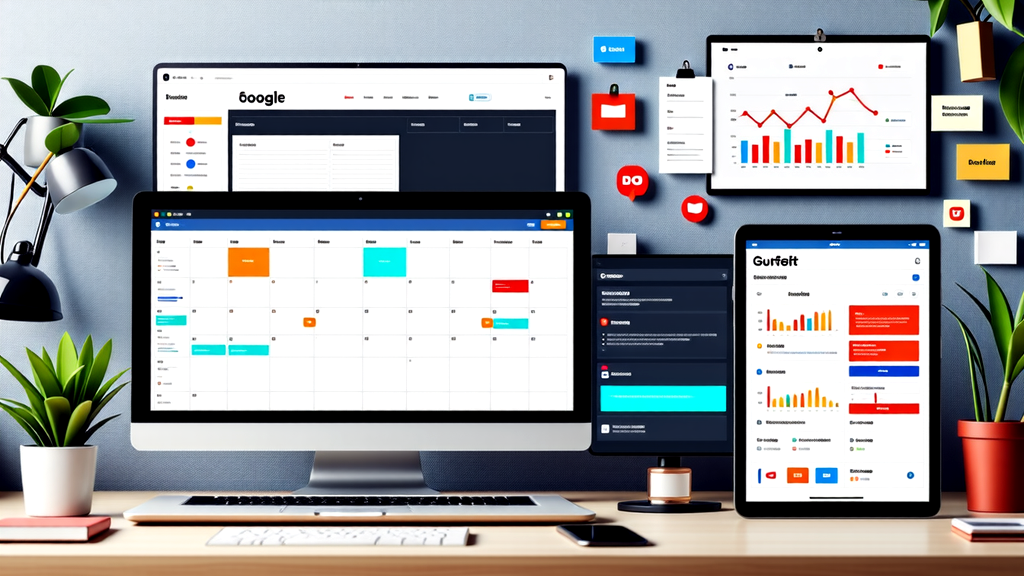
Using a Monthly Planner for Content Scheduling
Incorporating a monthly planner for scheduling your blog projects can transform your workflow. Allocate specific days for brainstorming blog post ideas, drafting, and finalizing each blog post. Sync your planner with your social media calendar to ensure seamless integration of blog content. This approach helps you manage content creation efficiently. By planning ahead, you reduce last-minute stress and maintain consistency. Consider tools like Trello for visual organization.
Exploring Online Content Planners for Ease and Efficiency
Exploring online tools for ease and efficiency can revolutionize how you create a content calendar. These tools streamline your workflow by organizing blog post ideas and social media schedules. Imagine a single platform where you can visualize your blog content, media calendar, and even plan your next blog post weeks in advance. For a practical example, check how this Google Sheets template can simplify planning. Integrate these tools and watch your efficiency soar.
Leveraging Content Calendar Templates to Save Time
Leveraging templates for your content calendar can drastically cut down on planning time. Knowing how to create a content calendar efficiently ensures you don’t waste precious hours. Templates help you organize blog content and streamline your social media schedule. By pre-filling dates and thematic ideas, you’re always ready with fresh blog post ideas. This approach ensures every blog post aligns with your media calendar, keeping your social strategies cohesive and time-efficient.
5 Essential Tips for Effective Content Creation and Scheduling
To maximize your efforts in crafting and organizing content, how to create a content calendar involves key strategies. Plan diverse topics, balancing evergreen and trending themes. Align your social media and blog post schedules for consistency. Use tools like Google Sheets for a streamlined approach. Repurpose content to save time; a single blog post can fuel multiple updates. Regularly review analytics to fine-tune your media calendar for optimal engagement.
Plan diverse topics
Align schedules
Use tools
Repurpose content
Review analytics
How to Continuously Generate Fresh Blog Post Ideas
Generating fresh blog ideas can be daunting. Start by exploring current events and trending topics in your industry. Use social media platforms to see what your audience is buzzing about. Don’t forget to review your analytics to identify high-performing content.
Experiment with different types of posts, such as interviews or listicles. Utilize a media content calendar to organize your ideas and keep track of what’s coming next. This approach not only keeps your blog consistent but also ensures a steady flow of engaging blog post ideas.

Maintaining Your Blog Content Calendar: A Long-Term Commitment
Ensuring that your blog stays relevant requires maintaining your blog content calendar continuously. Regularly update your schedule with fresh blog post ideas and adapt it to reflect industry changes. Keep an eye on your social media calendar for timely topics and trends. Use a media content calendar to synchronize your blog with your social channels. Staying diligent about blog content updates not only keeps your audience engaged but also helps optimize your strategy over time.
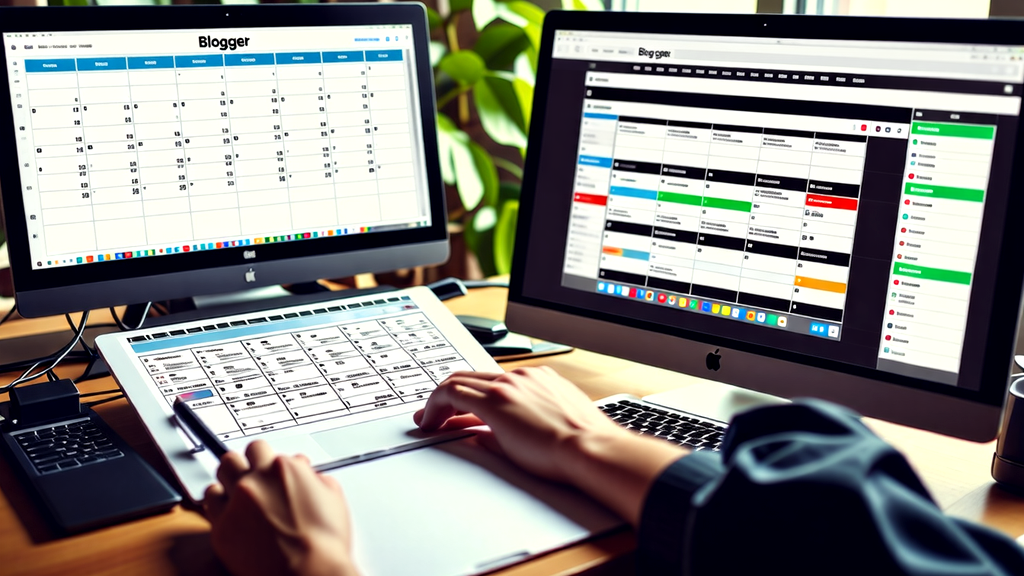
Conclusion
Sticking to a content calendar can transform your blogging from sporadic posts to a consistent and engaging experience for your readers. By planning ahead, you ensure that each piece of content serves a purpose and aligns with your goals. This foresight not only keeps your blog fresh but also helps build and maintain a loyal readership.
Remember, the key to a successful content calendar is flexibility. While planning is crucial, being open to adjustments based on performance and audience feedback will keep your blog relevant and engaging. Regularly reviewing and updating your calendar ensures that it remains a valuable tool for your blogging strategy. Keep writing, stay consistent, and watch your blog grow!
FAQ
How does a content calendar improve blog consistency?
A content calendar helps you plan and organize your blog posts in advance. By having a clear schedule, you can maintain a consistent posting frequency, which keeps your readers engaged and coming back for more. It also reduces last-minute stress and ensures you cover a variety of topics.
What types of content should be included in a blog content calendar?
Include a mix of seasonal posts, evergreen content, cornerstone content, and announcement/news posts. This variety keeps your audience interested and addresses different needs and interests. Seasonal posts capitalize on current trends, while evergreen content remains relevant over time.
How do I choose the right tools for creating a content calendar?
Consider tools that fit your workflow and offer features like drag-and-drop scheduling, collaboration options, and reminders. Popular choices include Google Calendar, Trello, and specialized content calendar tools like CoSchedule. Some tools even offer templates to get you started quickly.
How often should I update my content calendar?
Regularly review and update your content calendar to reflect any changes in your goals, audience preferences, or industry trends. A monthly review is a good practice to ensure everything stays on track. Adjust your topics and posting frequency as needed to stay relevant.
What are some tips for generating fresh blog post ideas?
Keep a running list of ideas by brainstorming regularly and staying curious. Engage with your audience through comments or social media to understand their interests. Use tools like Google Trends and BuzzSumo to spot popular topics. Collaborate with your team for diverse perspectives.

